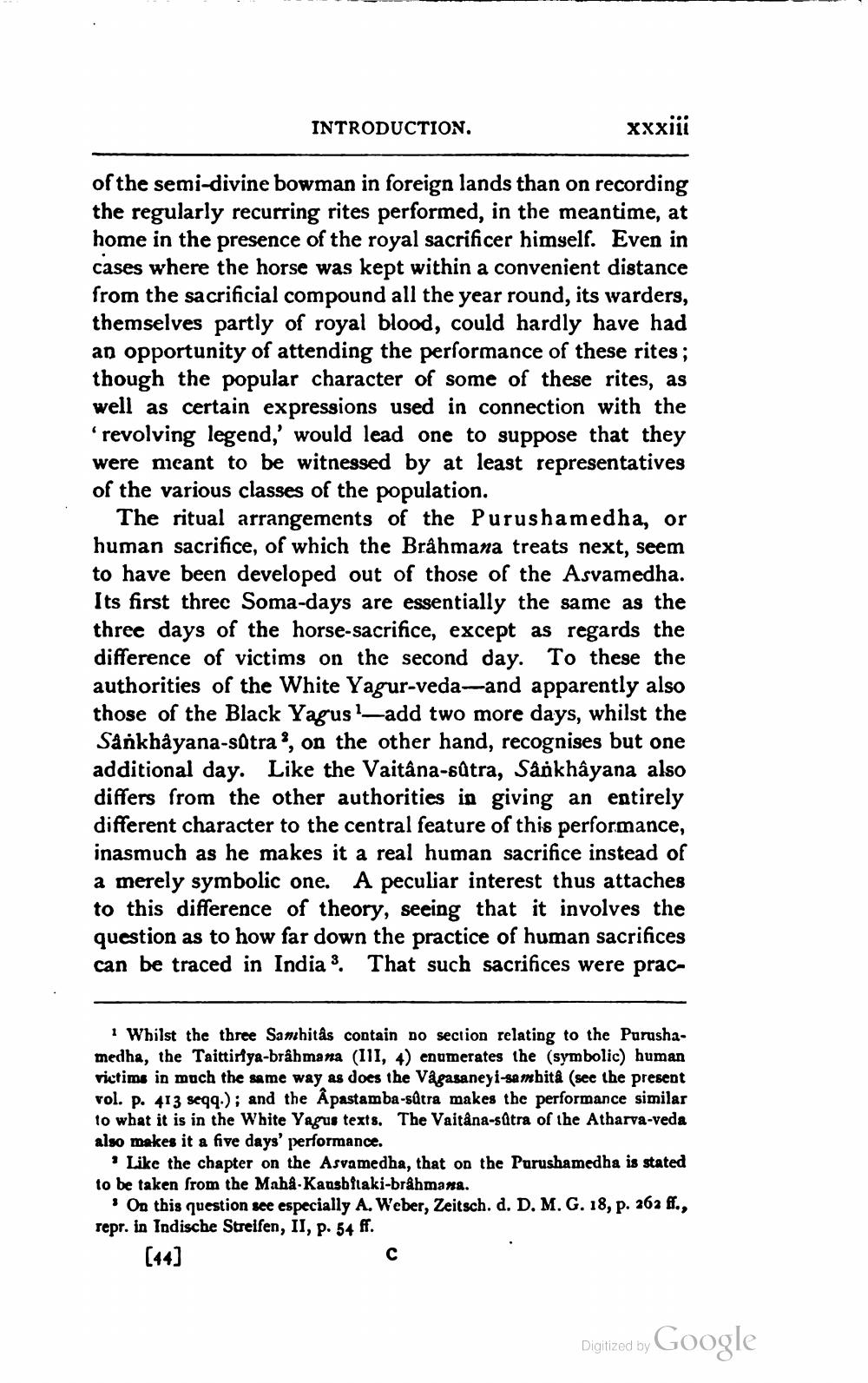________________
INTRODUCTION.
xxxiii
of the semi-divine bowman in foreign lands than on recording the regularly recurring rites performed, in the meantime, at home in the presence of the royal sacrificer himself. Even in cases where the horse was kept within a convenient distance from the sacrificial compound all the year round, its warders, themselves partly of royal blood, could hardly have had an opportunity of attending the performance of these rites; though the popular character of some of these rites, as well as certain expressions used in connection with the 'revolving legend,' would lead one to suppose that they were meant to be witnessed by at least representatives of the various classes of the population.
The ritual arrangements of the Purushamedha, or human sacrifice, of which the Brahmana treats next, seem to have been developed out of those of the Asvamedha. Its first three Soma-days are essentially the same as the three days of the horse-sacrifice, except as regards the difference of victims on the second day. To these the authorities of the White Yagur-veda--and apparently also those of the Black Yagus add two more days, whilst the Sankhảyana-sætra, on the other hand, recognises but one additional day. Like the Vaitâna-sûtra, Sankhâyana also differs from the other authorities in giving an entirely different character to the central feature of this performance, inasmuch as he makes it a real human sacrifice instead of a merely symbolic one. A peculiar interest thus attaches to this difference of theory, seeing that it involves the question as to how far down the practice of human sacrifices can be traced in India 3. That such sacrifices were prac
1 Whilst the three Sanhitas contain do section relating to the Purushamedha, the Taittirya-brâhmana (I11, 4) enumerates the (symbolic) human victims in much the same way as does the Vågasaneyi-sambitá (see the present vol. p. 413 seqq.); and the Âpastamba-sâtra makes the performance similar to what it is in the White Yagus texts. The Vaitâna-sâtra of the Atharva-veda also makes it a five days' performance.
· Like the chapter on the Asvamedha, that on the Purushamedha is stated to be taken from the Maha-Kansbitaki-brâhmana.
. On this question see especially A. Weber, Zeitsch. d. D.M.G. 18, p. 262 ff., repr. in Indische Streifen, II, p. 54 ff.
Digitized by Google




